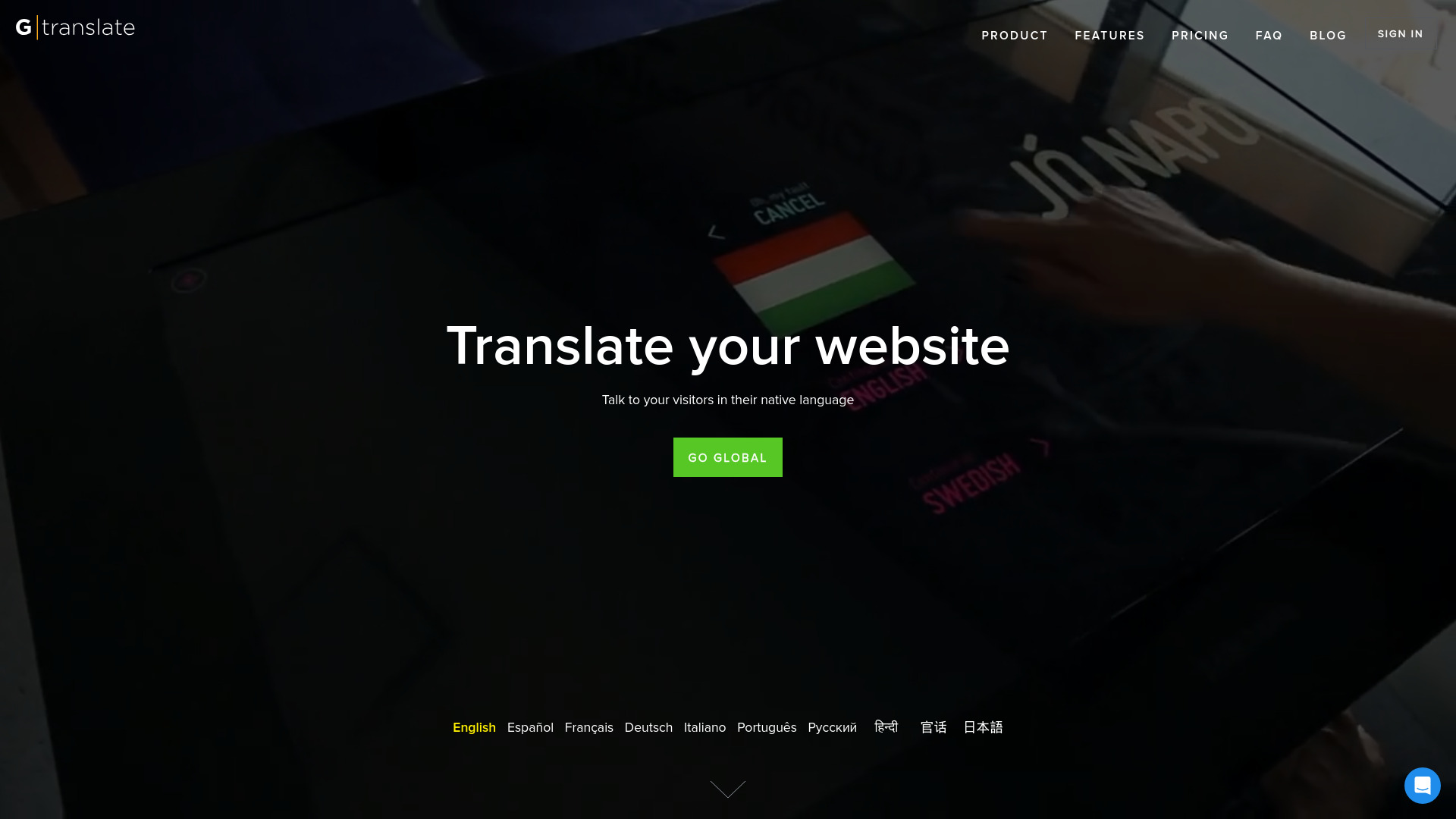- Home
- AI SEO Tools
- GTranslate

GTranslate
Open Website-
Tool Introduction:Auto-translate your site into 100+ languages to grow global traffic
-
Inclusion Date:Oct 21, 2025
-
Social Media & Email:
Tool Information
What is GTranslate AI
GTranslate AI is a website translator that automatically converts your site’s content into multiple languages, turning any HTML website into a fully multilingual experience. It helps you reach a global audience, grow international traffic, and explore new markets with minimal engineering effort. Using neural machine translation, a customizable language switcher, and SEO-friendly options like translated URLs and hreflang markup, GTranslate AI streamlines localization workflows and reduces time to market while supporting brand consistency via glossaries and optional human edits.
GTranslate AI Main Features
- Automatic website translation: Instantly translate any HTML site into dozens of languages using neural machine translation.
- Multilingual SEO: Supports translated URLs, hreflang tags, and indexable pages to improve international search visibility.
- Language switcher: Add a customizable language selector that fits your site’s design and UX.
- URL and metadata translation: Localize slugs, titles, and meta descriptions for better relevance and CTR.
- Glossary and rules: Control key terms, brand names, and style with custom dictionaries and exclusions.
- Human editing: Refine machine output with post-editing for critical pages and campaigns.
- CMS and platform compatibility: Works with common stacks, including popular CMSs and eCommerce platforms.
- Performance and caching: Delivers translated pages quickly with caching/CDN-friendly architecture.
Who Should Use GTranslate AI
GTranslate AI is ideal for website owners, marketers, and developers who need a fast, scalable way to make content multilingual. It suits eCommerce stores expanding cross-border, SaaS products onboarding global users, content publishers seeking international reach, travel and hospitality brands, educational institutions, and nonprofits communicating with multilingual audiences.
How to Use GTranslate AI
- Sign up and connect your website or install the relevant plugin/snippet for your platform.
- Select target languages based on your audience and market priorities.
- Configure the language switcher style and placement on your site.
- Enable SEO options such as translated URLs and hreflang tags if needed.
- Create glossary rules to protect brand terms and set translation preferences.
- Review and optionally post-edit key pages for accuracy and tone.
- Publish and submit multilingual sitemaps to search engines.
- Monitor analytics, search performance, and user behavior to refine language coverage.
GTranslate AI Industry Use Cases
An online retailer adds Spanish, French, and German versions of product pages, boosting organic visibility and conversion in Europe. A SaaS company localizes its docs, pricing, and onboarding content into Japanese and Korean to reduce support load and increase sign-ups. A travel portal translates destination guides and booking flows to support international visitors, improving SEO with localized URLs and metadata.
GTranslate AI Pricing
GTranslate AI typically offers tiered plans that scale with features such as multilingual SEO, custom domains/subdirectories, and editing capabilities. A free option or trial may be available for basic automatic translation, while advanced capabilities are provided on paid subscriptions. For the latest plan details and limits, refer to the official pricing page.
GTranslate AI Pros and Cons
Pros:
- Rapid, automated localization for any HTML website.
- SEO-friendly structure with hreflang and translated URLs.
- Easy to integrate with common CMS and eCommerce platforms.
- Glossary and human editing help maintain brand consistency.
- Scalable approach that reduces localization time and cost.
Cons:
- Machine translations may require edits for nuance and industry jargon.
- Complex layouts or RTL languages can need extra styling attention.
- SEO benefits depend on correct configuration and site architecture.
- Dynamic content and SPAs might require additional setup.
- Advanced features and higher traffic levels come with subscription costs.
GTranslate AI FAQs
-
Question 1: Does GTranslate AI support multilingual SEO?
Yes. It can generate translated, indexable URLs and hreflang tags to signal language/region targeting to search engines.
-
Question 2: Can I edit translations manually?
Yes. You can review and post-edit machine translations and set glossary rules for consistent terminology.
-
Question 3: Will it work with my CMS or shop platform?
GTranslate AI supports common CMS and eCommerce platforms and can be added via plugin or code snippet.
-
Question 4: How does it affect site speed?
Translated pages can be cached and delivered efficiently; proper configuration helps maintain performance.
-
Question 5: Is there a free version?
A basic option or trial may be available; advanced SEO and customization typically require paid plans.

